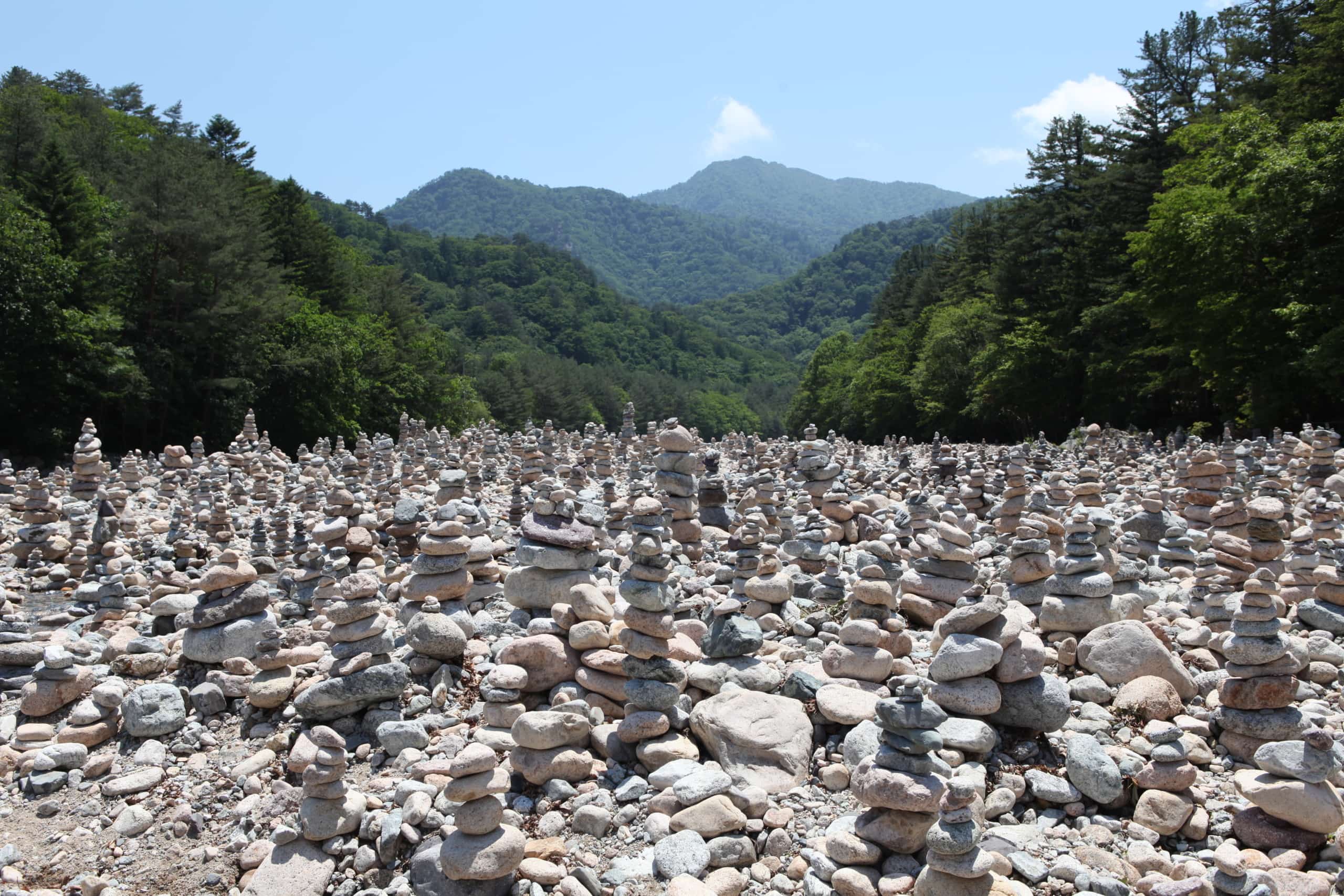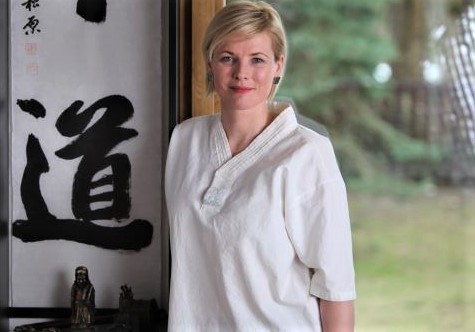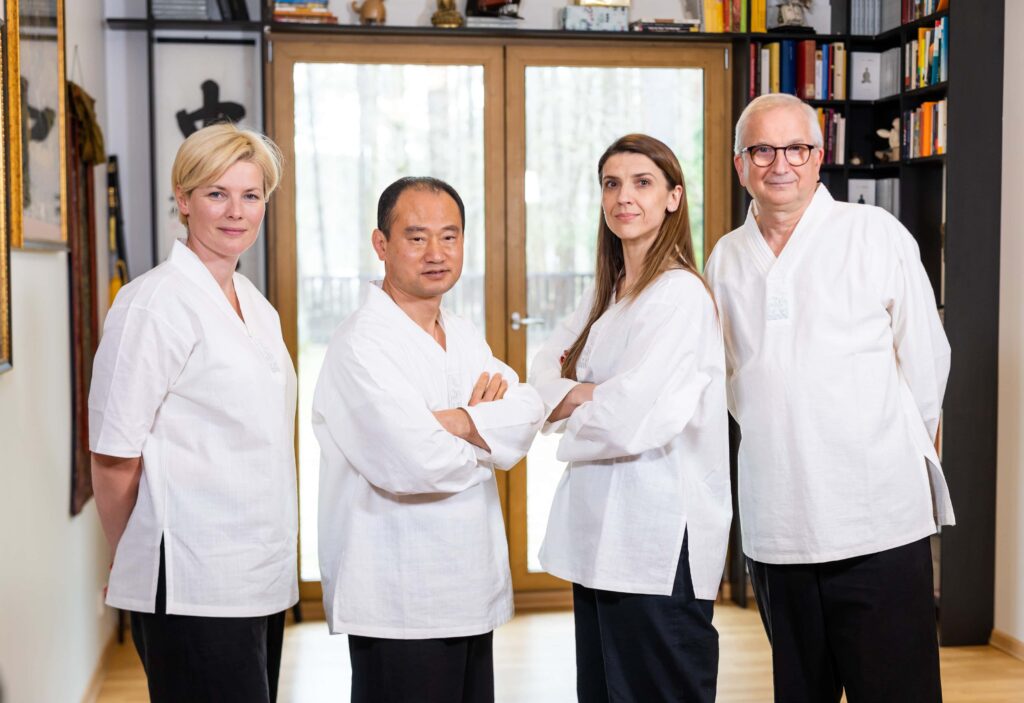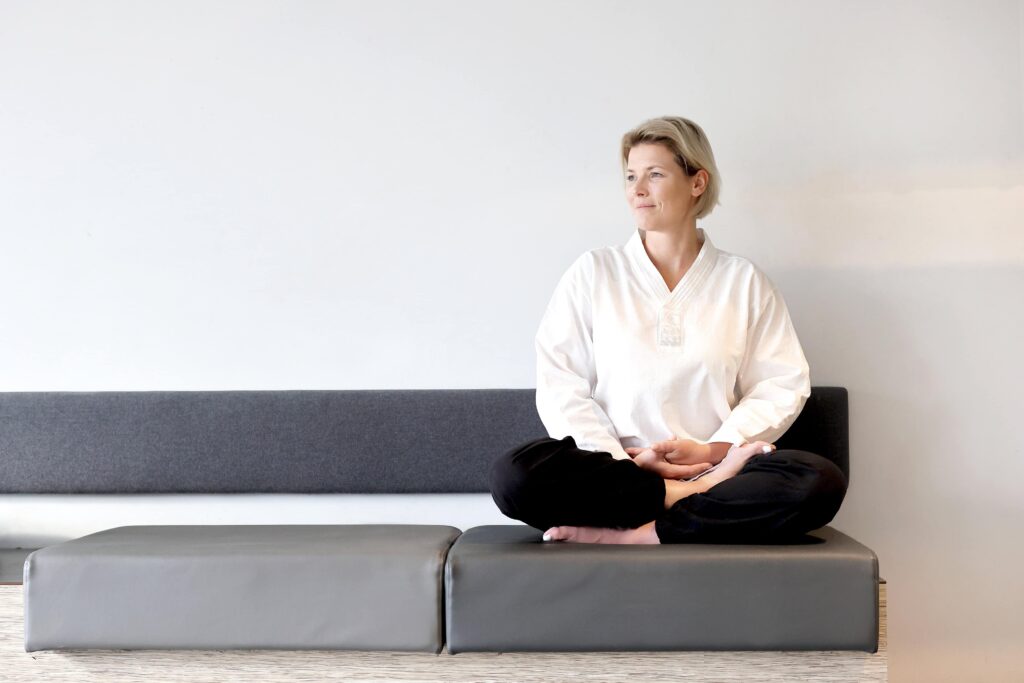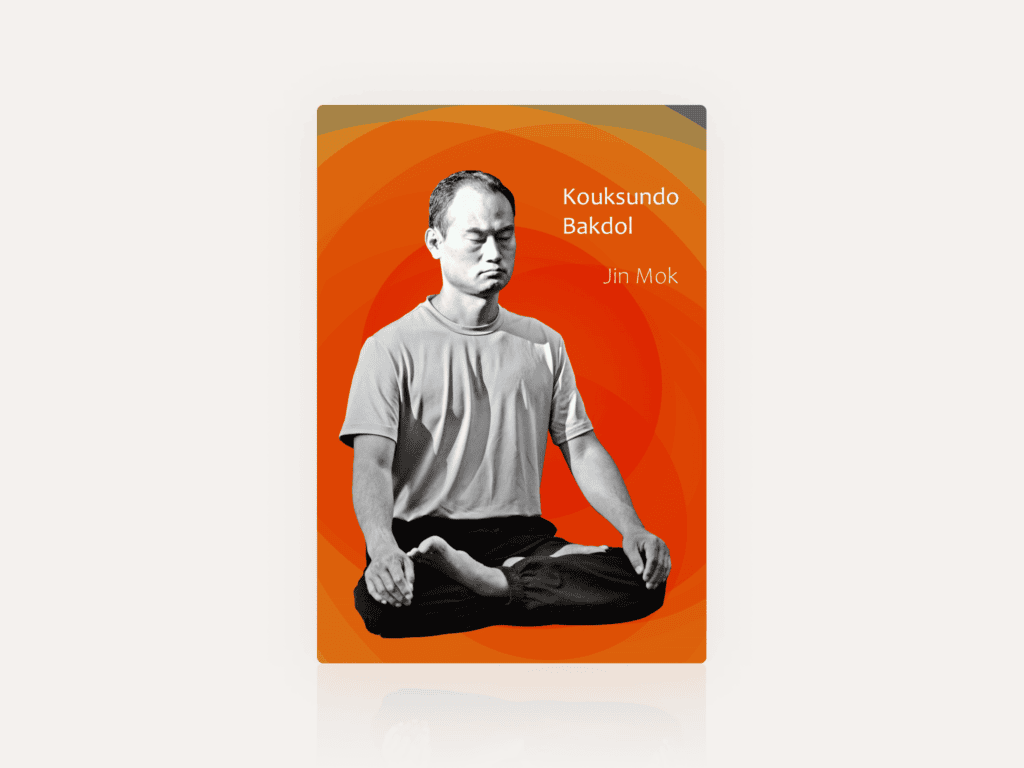The Breathing Meditation
The Kouksundo meditation is active – the postures change many times during the meditation. While meditating a person should breathe using the lower abdomen. That is how all of us breathe as babies, but we tend to loose this natural breathing as we grow up. The Kouksundo practice helps to recover the natural breathing which is vitaly important for humans.
A special Kouksundo mantra accompanies the meditation. The mantra helps to keep the rhythm of the breathing. Overall, the whole Kouksundo system has 433 meditation postures: beginners start with 25 postures called Jung-ki. After 100 practices the beginners can start practicing another set of 25 Jung-ki postures.
Extract from master’s Jin Mok book Kouksundo.
A person begins to breath as soon as they are born. If you were to observe a sleeping infant, you would see that the infant breathes deeply from the bottom of the stomach. As a person grows and matures, their breath rises upwards. Most adults breath using their chest. It has been said, that when a person is elderly or quite ill, then their breathing rises to their shoulders. When breathing rises to the level of the heart, a person dies. The higher the breathing, the worse a person’s health.
Be that how it may, a person is wise. You can use your wisdom to learn anew how to breath from deep within your stomach, like a newborn. By breathing in this manner, you can gather your scattered energy and restore your health.
First 25 meditation postures
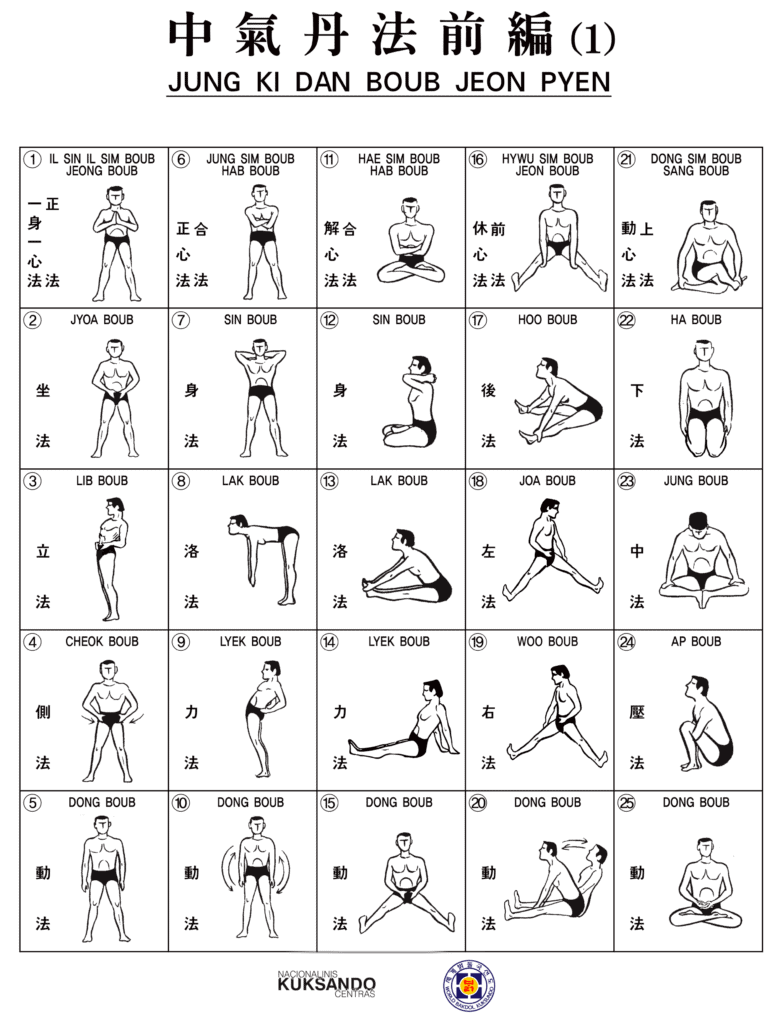
After 100 practices a person should start another 25 postures
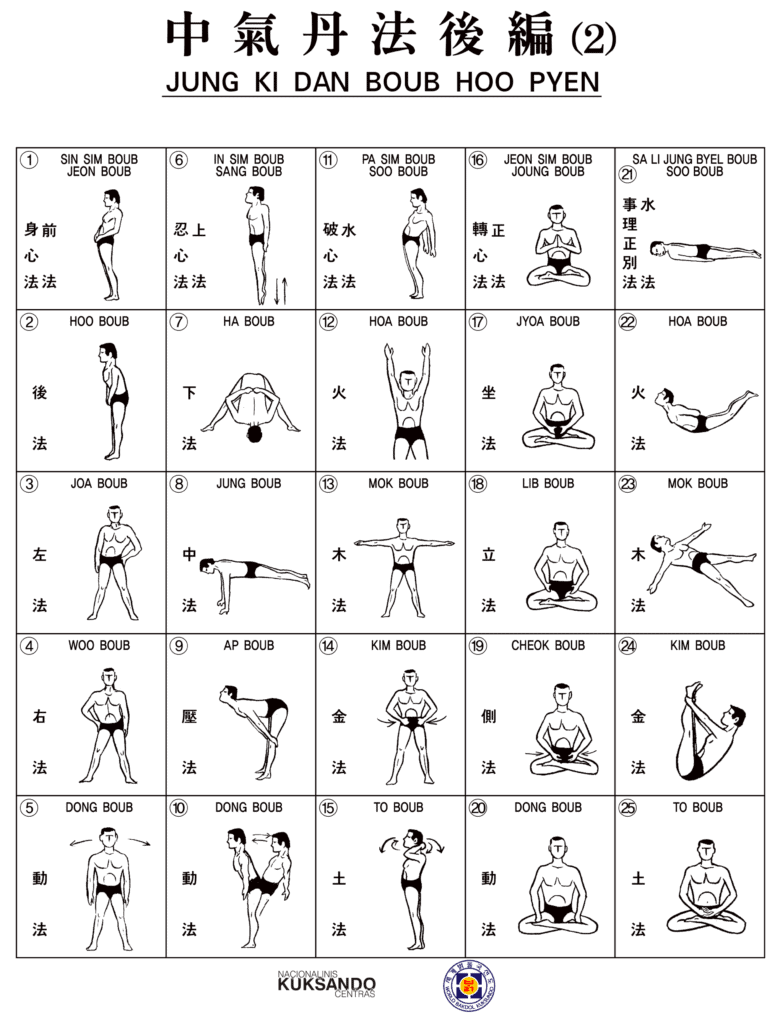
The Mantra
Extract from master’s Jin Mok book Kouksundo.
Therefore, it is recommended that during various practice sessions, practitioners listen to sounds that draw them closer to the Dao (Do-in-do-song). If we are engaged in the practice in the mountains, then the sounds come from Nature. We hear the wind blowing, the birds singing, and the sounds of animals, and so on.
If we manage to sit quietly and for a very long time, we will hear the unique sound of the cosmos breathing. Therefore, if a person merges into one with Nature, the natural sounds relax the Kouksundo practitioner’s soul and heart, dispelling unwanted thoughts and fears, allowing them to concentrate.
However, in the modern world it is difficult to hear the sounds of Nature. That is why the master himself recorded his voice singing the sixteen word Sondodzhiu mantra, repeating the words over and over again. In all Kouksundo centers practitioners engage in the breathing exercises while listening to this same recording, which substitutes for the sounds of Nature.
This sixteen word mantra, which originates from the Chinese language, sounds like this:
San do dzhiu / The Truth of Heavenly man belongs to man.
Dzhiong gak do von / I correctly understand the beginning of Truth.
Che dzi che nung / I gain wisdom and abilities.
Son do il hua / I merge with the Truth of Heavenly Man.
Go hual chiang seng / To protect all living things under the vault of Heaven.
The Kouksundo practise consists of 3 interrelated parts. At the beginning we do the relaxation exercises. Then the breathing meditation follows. The energy that is collected during the breathing meditation is spread through the body with the help of the special stretching exercises at the end of the practice session.
It is possible to practice Kouksundo individually without a teacher. However, we strongly recommend that each practitioner at least consults with a certified Kouksundo teacher.
